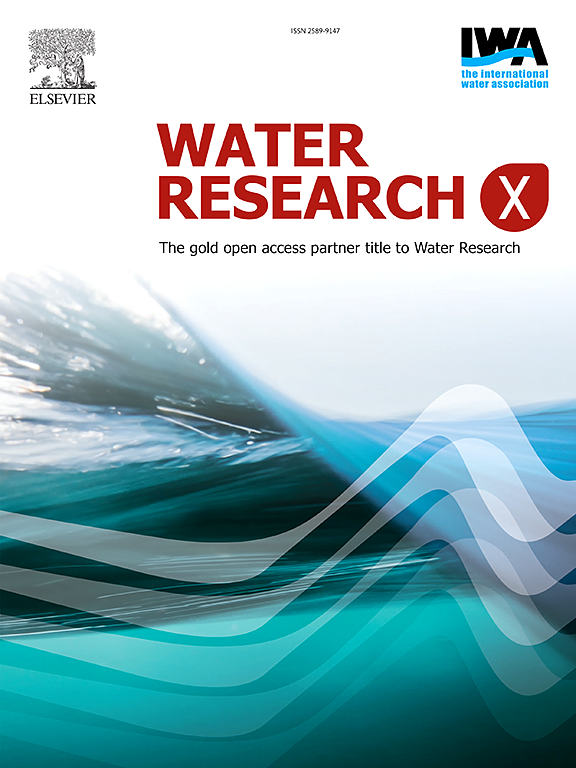Unraveling pathogen dynamics in rivers flowing into Taihu Lake: Insights from high-throughput sequencing and environmental correlations
IF 8.2
2区 环境科学与生态学
Q1 ENGINEERING, ENVIRONMENTAL
引用次数: 0
Abstract
Rapid urbanization and industrialization have intensified microbial health risks in river–lake systems, yet region-specific pathogen monitoring frameworks remain limited. We characterized pathogen communities in ten rivers flowing into Taihu Lake using a manually curated pathogen database combined with 16S rRNA gene amplicon sequencing (n = 28 sampling sites). A total of 38 potential pathogenic genera and 68 putative species were detected, with Mycobacterium (32.14 %) and Pseudomonas (16.76 %) being the most abundant. Pathogen risk prediction suggested that these taxa may pose potential health threats. Water samples exhibited significantly higher pathogen richness and diversity than sediments (P < 0.0001), and pathogen abundance declined along the river–lake continuum. Community composition was significantly associated with water temperature, pH, conductivity, and nutrient concentrations (all P < 0.05). Null model analyses indicated that stochastic processes predominated in community assembly, while deterministic selection was strongest at estuarine sites. These results suggest that pathogen distributions are jointly shaped by environmental filtering, hydrodynamic transport, and stochastic events such as dispersal limitation and ecological drift. Given the taxonomic resolution limitations of 16S rRNA amplicons, species-level assignments should be interpreted cautiously. Nevertheless, integrating amplicon sequencing with a pathogen-specific database provides a practical framework for early risk warning. This study advances understanding of spatial dynamics and ecological drivers of pathogen communities in river–lake networks and highlights the need for higher-resolution approaches, including metagenomics and virulence gene profiling, to refine microbial risk assessments in rapidly urbanizing watersheds.

揭示流入太湖河流的病原体动态:来自高通量测序和环境相关性的见解
快速的城市化和工业化加剧了河湖系统的微生物健康风险,但区域特异性病原体监测框架仍然有限。我们利用人工整理的病原体数据库结合16S rRNA基因扩增子测序,对流入太湖的10条河流进行了病原体群落特征分析(n = 28个采样点)。共检出38个潜在病原属和68个推定种,以分枝杆菌(32.14%)和假单胞菌(16.76%)最多。病原体风险预测表明,这些分类群可能构成潜在的健康威胁。水样的病原菌丰富度和多样性显著高于沉积物(P < 0.0001),病原菌丰度沿河湖连续体呈下降趋势。群落组成与水温、pH、电导率和养分浓度显著相关(P < 0.05)。零模型分析表明,随机过程在群落聚集中占主导地位,而确定性选择在河口位置最强。这些结果表明,病原菌的分布是由环境过滤、水动力输运以及扩散限制和生态漂变等随机事件共同形成的。考虑到16S rRNA扩增子的分类学分辨率限制,应该谨慎地解释物种水平的定位。然而,将扩增子测序与病原体特异性数据库相结合,为早期风险预警提供了一个实用的框架。该研究促进了对河湖网络中病原体群落的空间动态和生态驱动因素的理解,并强调了对高分辨率方法的需求,包括宏基因组学和毒力基因谱,以完善快速城市化流域的微生物风险评估。
本文章由计算机程序翻译,如有差异,请以英文原文为准。
求助全文
约1分钟内获得全文
求助全文
来源期刊

Water Research X
Environmental Science-Water Science and Technology
CiteScore
12.30
自引率
1.30%
发文量
19
期刊介绍:
Water Research X is a sister journal of Water Research, which follows a Gold Open Access model. It focuses on publishing concise, letter-style research papers, visionary perspectives and editorials, as well as mini-reviews on emerging topics. The Journal invites contributions from researchers worldwide on various aspects of the science and technology related to the human impact on the water cycle, water quality, and its global management.
 求助内容:
求助内容: 应助结果提醒方式:
应助结果提醒方式:


